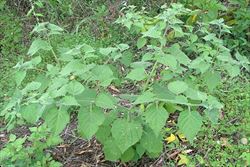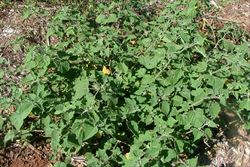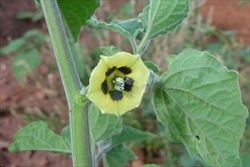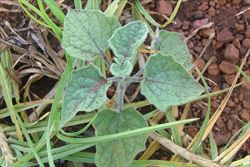Click on images to enlarge

habit (Photo: Sheldon Navie)

habit (Photo: Sheldon Navie)

hairy leaves (Photo: Sheldon Navie)

close-up of leaf (Photo: Sheldon Navie)

yellow flower with hairy stem and leaf undersides (Photo: Sheldon Navie)

close-up of flower with purplish-brown centre and bluish-coloured stamens (Photo: Forest and Kim Starr, USGS)

hairy immature fruit (Photo: Sheldon Navie)

close-up of mature fruit (Photo: Sheldon Navie)

young plant (Photo: Sheldon Navie)
Scientific Name
Physalis peruviana L.
Synonyms
Physalis edulis Sims
Family
Solanaceae
Common Names
Barbados gooseberry, bladderberry, Cape gooseberry, cherry tomato, golden berry, golden Cape gooseberry, golden husk goldenberry, gooseberry, gooseberry tomato, ground cherry, ground-cherry, groundcherry, love apple, Peruvian cherry, Peruvian ground cherry, Peruvian ground-cherry, Peruvian groundcherry, Peruvian tomato, strawberry tomato, wild gooseberry, winter cherry
Origin
Native to tropical South America (i.e. Venezuela, Bolivia, Colombia, Ecuador and Peru).
Naturalised Distribution
Widely naturalised in southern and eastern Australia (i.e. in eastern Queensland, in the coastal districts of eastern New South Wales, in southern Victoria, in south-eastern South Australia and in the coastal districts of south-western Western Australia). Also naturalised on Lord Howe Island and Norfolk Island, and sparingly naturalised in Tasmania.
Widely naturalised in other parts of the world (i.e. Europe, tropical and southern Africa, Asia, La Réunion, New Zealand, the Caribbean, the USA and many Pacific islands (i.e. the Galápagos Islands, Fiji, Niue, Tonga, New Caledonia and Hawaii).
Notes
Cape gooseberry (Physalis peruviana) is regarded as an environmental weed in Western Australia, New South Wales and Victoria.

